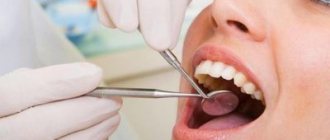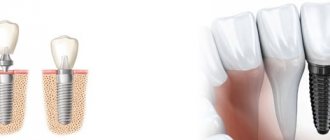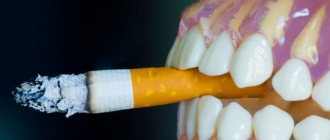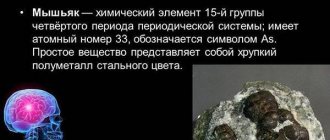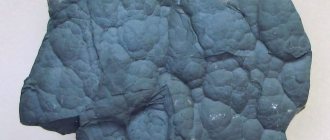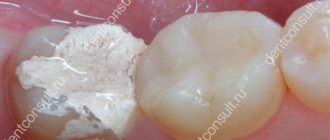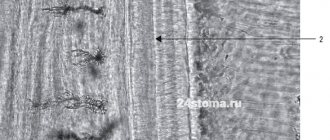Use of arsenic in dentistry
The paste, which is based on the oxide of this poison, has a destructive effect. Therefore, it can be used before removing the nerve. What are the properties of the paste?
- It has a fairly high degree of toxicity;
- It acts as a pain reliever;
- The mixture has a pronounced antibacterial effect;
- Its action is prolonged;
After a day or two, arsenic kills the nerve in the tooth. Patients with a low pain threshold do not feel pain during extraction of such a masticatory organ. It happens that the operation is performed after an injection with an anesthetic substance. Most often, the mass is laid for 1-2 days. The duration depends on the complexity of the pathology of the unit. It is extended when the multi-channel unit is disturbed.
To determine the duration of action of the drug, the doctor takes into account its composition. As a rule, more than half of the paste consists of anesthetic components and anhydride, which has a necrotic effect. Also, antiseptics, tannin for binding ingredients, and fillers are added to the mass.
Arsenic poisoning
Before doctors arrive, the victim should be induced to vomit. To do this, he is given 0.5-1 liter of clean water to drink, after which he is pressed with his fingers on the root of the tongue. The manipulation is carried out several times until a clean washing liquid begins to flow away, in which there are no foreign impurities. Next, the patient must be laid down and an influx of fresh air must be provided. For unconscious people, gastric emptying is contraindicated.
First aid
Acute arsenic poisoning requires first aid on the spot. The patient is advised to undergo gastric lavage using at least 10 liters of water mixed with adsorbent. After the procedure is completed, the patient is given 8-10 tablets of activated carbon and 50-100 ml of magnesium sulfate to drink as a laxative. An alternative is unithiol administered into the stomach through a tube. The same drug is infused intramuscularly.
At the prehospital stage, other measures are taken to maintain vital functions. To eliminate hypovolemia and correct electrolyte balance, infusion therapy is started. Anticonvulsants are used for seizures. In order to reduce pain, antispasmodics and analgesics are prescribed. Transfer to mechanical ventilation and titrated supply of vasopressors may be required.
Hospital treatment
Unithiol therapy continues in the hospital setting. The drug is prescribed in a course of 5-6 days. In its absence, the patient should receive N-acetylcysteine, which acts as a donor of monothiol groups. In case of damage by arsenous hydrogen, mecaptide is added to the regimen. Active methods of detoxification are required: intestinal lavage with the introduction of 8-10 liters of saline enteral solution into the intestines, hemodialysis, repeated gastric lavage.
After intestinal lavage is completed, the patient is given an antidiarrheal drug to drink. Infusion of saline solutions is required; in case of severe dehydration, infusion of colloids. Adult patients can receive fluids by mouth (rehydration solutions) as long as this does not cause vomiting. Additionally, glucocorticoids, ascorbic and nicotinic acid are prescribed. Severe metabolic acidosis is eliminated with sodium bicarbonate.
Recovery
After discharge from the hospital, the patient is recommended to be monitored by a local therapist to exclude the development of delayed consequences of chemical injury. It is possible to visit gastroenterological sanatoriums. Food must meet the requirements of table No. 4 according to Pevzner. Restrictions must be observed until the gastrointestinal tract is completely stabilized.
Indications and contraindications
The paste is used in cases where it is impossible to use modernly produced anesthetics. Such situations occur in certain indications:
- The patient is allergic to other anesthetics;
- If you need to urgently kill nerve fibers and remove a molar;
- When the patient cannot tolerate anesthesia for health reasons;
- Urgent treatment of patients with acute pain;
- Treatment of incisors, canines, molars in childhood when it is impossible to use local anesthesia;
Of course, like every drug, the paste has contraindications. The doctor must take them into account.
- It is impossible to put mass into a pathological tooth if the patient is under two years old.
- Keeping the paste is not allowed in case of chronic kidney disease or prostate disease.
- If the tooth canals are curvature, another remedy is used.
- The paste is not used at the moment of resorption of the roots of the chewing organs.
- This method is not used for glaucoma and allergies to components.
Why might a filling fall out?
Premature opening of a tooth cavity with arsenic embedded in it most often occurs due to the use of low-quality materials in its manufacture. In addition, the dentist himself can violate the technology: position the filling incorrectly, leave a gap between it and the tooth, poorly clean the carious cavity, and so on. Any medical violation is fraught with consequences; a filling can fall out even without them. For example, if the patient has very thin tooth enamel and lacks calcium and fluoride, or if he frequently eats solid foods. Loss of a filling can be caused by poor oral care, mechanical damage and bad habits. In any case, you cannot postpone your visit to the dentist.
How is the treatment carried out?
To treat a diseased tooth or have it removed, during the first visit the dentist sends the patient for an x-ray. Based on the diagnostic results, further procedures are determined. Neglected masticatory organs are subject to extraction, to which it is useless to apply conservative therapy. Often the treatment regimen includes nerve removal and filling.
- First, the dentist opens the pulp, cleans the pathological cavity, removing dead tissue from it.
- The cavity is then filled with the required amount of paste.
- A cotton ball soaked in a phenol solution is placed on top of this layer.
- After this, a temporary soft filling is installed.
The patient is scheduled for a next visit. The doctor recommends refraining from eating for at least two hours and not pressing on the pathological unit. On the second visit, the dentist:
- remove the filling;
- will remove arsenic;
- cleans the cavity of the chewing organ;
- will painlessly remove a nerve that died under the influence of poison;
- install permanent filling material;
Pain after applying the product
For how many days is arsenic administered during dental treatment? For each person, this issue should be considered individually, but in any case, the substance should relieve painful sensations almost immediately after installation. The rapid anesthetic effect of the pastes is ensured by lidocaine, novocaine or dicaine included in the composition. If, even after a visit to the dentist, the pain does not subside, and sometimes manifests itself with even greater force, then, most likely, the doctor put an insufficient amount of the drug into the tooth or did it on a closed pulp, which provokes severe pain and swelling.
Of course, in addition to the possibility of medical errors, pain can occur for other reasons, for example:
- with an increased individual sensitivity threshold;
- slow effect of the drug;
- drug-induced inflammation;
- individual intolerance to any of the components of the paste.
The latter is fraught with serious consequences, so if swelling begins to increase along with pain, it is necessary to urgently call an ambulance. Drug-induced inflammation is also accompanied by swelling and increased body temperature. It provokes an abscess on the gum. The painful area should be immediately examined by a specialist.
Pain may not occur immediately after laying. Most often, they indicate the beginning of the death of the jaw bones, so the drug must be immediately removed from the tooth cavity. In any case, you shouldn't endure the pain. It is better to immediately contact a specialist for help.
Possible side effects
Arsenic is placed in the tooth so that it deadens the nerve. But its action can cause complications. How dangerous is this? If you consult an experienced doctor who will use not pure poison, but its derivative, there is nothing to worry about. The paste is placed deeply and sealed on top, so it does not enter the stomach. High doses of the substance and its untimely removal are harmful. In this case, there is a risk of inflammation, periostitis, periodontitis. Continuing to walk with poison longer than prescribed is dangerous! After all, prolonged contact with tissues poisons the body. Untimely removal and excessive dose cause:
- Darkening of dentin;
- Inflammation of the tissues surrounding the unit;
- Pulp swelling, pulpitis;
- Necrosis of bone tissue and periosteum;
- General intoxication; poisoning of the body.
Sometimes it happens that the pain becomes stronger and becomes tearing. This happens when the dose of the substance is too small or the threshold of vulnerability is high, as well as with necrosis of the periosteum and individual intolerance.
Arsenic in the tooth: what to do if it still hurts?
Arsenic in dentistry is used to reliably kill the diseased nerve of the tooth. This technique has long been known and is slowly giving way to modern methods of anesthesiology. However, modern specialists still often practice the use of arsenic.
Arsenic in the tooth: the tooth hurts, you need to block the pain
In diseases such as caries, pulpitis or periodontitis, the inflamed dental nerve causes severe pain. In order to “kill” the diseased nerve, a special arsenic paste is used, the dosage of which is calculated individually for each patient. After putting the paste into the affected tooth, the doctor sets the time for the next appointment, which cannot be postponed. You can walk around with arsenic in your tooth for no more than three days!
What to do if there is arsenic in the tooth, but the tooth still hurts?
As a rule, arsenic quite quickly carries out the process of necrotization of the pulp, and the tooth stops hurting. But it also happens that there is arsenic in the tooth, but it still hurts. Most often, the pain after placing a temporary filling with arsenic subsides gradually over one to two days. If, after this period, the tooth continues to hurt, this can be caused by various reasons:
- pain is your body's reaction to the drug;
- temporary filling has an irritating effect;
- the doctor has chosen the wrong dosage of the drug for you;
- the medicine was installed incorrectly;
- osteonecrosis has occurred;
- the inflammation process has gone beyond the pulp.
In any of the indicated cases, you should immediately consult a doctor, because tooth pain that does not stop after arsenic is present is a very alarming sign.
What to do as first aid before you visit the dentist?
In order to relieve pain, we advise you to take some anti-inflammatory non-steroidal drug. For example, diclofenac, nurofen, ibuprofen, etc. Ordinary analgin can also help. Do not self-medicate under any circumstances - do not rinse the sore tooth with warm solutions and do not apply heat to the sore spot. If the pain is unbearable, and there is still a long time before visiting a doctor, you can try to remove the medicine yourself, but under no circumstances swallow or chew it, and after removing it, rinse your mouth thoroughly.
You can get a consultation at the DENTISTRY clinic. Make an appointment by calling +7 (8342) 308–088 or using the form below.
Make an appointment
Arsenic during pregnancy and in pediatric dentistry
Often, tooth root removal is required for pregnant women or children. During pregnancy and the appearance of milk units, the paste is used very rarely.
- Firstly, the issue of the effect of toxins on the delicate roots of temporary teeth and the embryo has not been sufficiently studied.
- Secondly, it is difficult to correctly calculate the tiny dose for children.
- Thirdly, a child may accidentally swallow the fallen paste.
Therefore, the substance is used only as a last resort when the patient is allergic to anesthesia. Due to high risks, the toxic substance is replaced with a safe one. When the pediatric dentist is forced to use the paste, its action time is reduced to a minimum. In other cases, alternative pulp necrotization technologies are used.
How can you remove arsenic yourself?
All manipulations with dental treatment should be carried out by a dentist, but it happens that the pain after applying arsenic is unbearable, and it is not possible to contact a specialist. Then, as an emergency measure, you can remove the arsenic filling yourself. For this:
- Prepare a sewing needle and disinfect it with alcohol or a solution of potassium permanganate. You can use a sterile needle from a medical syringe.
- Brush your teeth well and wash your hands.
- Stand in front of a mirror and, if the temporary filling does not fall out on its own, pick it apart, being careful not to touch the gum.
- Under the filling you will see a gray ball, this is a paste with arsenic. Carefully pick it up with a needle and remove it. Don't swallow it!
- Now rinse your mouth with soda solution or chamomile decoction. It is advisable to add iodine or hydrogen peroxide to them.
- Cover the exposed tooth with a cotton pad.
Now you need to urgently consult a dentist, since an open canal is an easy path for infection. Before visiting the dentist, try not to eat or drink so that food particles do not get into the sore tooth.

